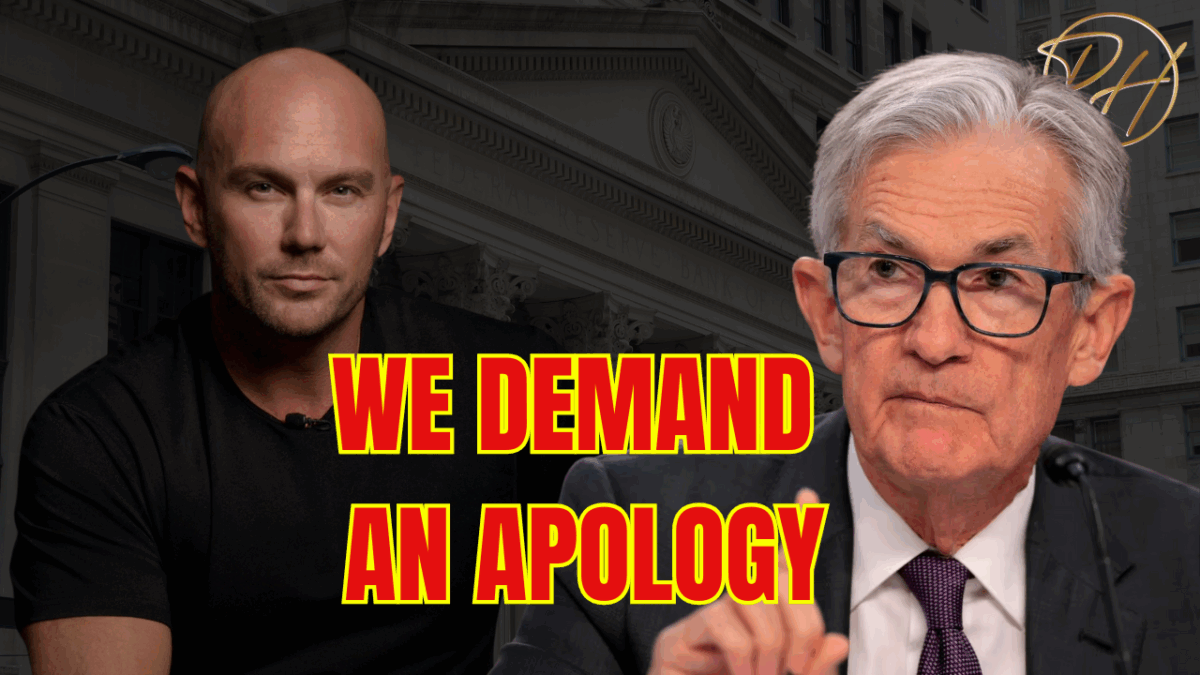
Jerome Powell, the Fed, and the Cost of Inaction
If Jerome Powell were the CEO of a Fortune 500 company, he’d likely be out of a job. His missteps as Federal Reserve Chair have left a lasting mark on the U.S. economy. From failing to act on early signs of inflation to overcorrecting with aggressive rate hikes, Powell’s decisions have rattled markets, crushed affordability for homebuyers, and strained the financial stability of millions of Americans.
In the wake of COVID-19, Washington deployed unprecedented economic stimulus—around $5 trillion in relief spending—on top of the Fed’s trillions in asset purchases. These efforts helped prevent a depression, but they also laid the groundwork for inflation. Yet Powell downplayed the risks. As late as August 2021, with prices rising, he insisted inflation would be “transitory.” The Fed kept rates near zero and continued quantitative easing even as inflationary pressures grew.
That delay proved costly. The Fed relied on lagging indicators—especially housing data—which didn’t capture real-time shifts like surging rents. By June 2022, inflation peaked at 9.1%, a 40-year high. Powell later admitted the Fed should have acted sooner. But by then, inflation was entrenched and tougher measures were required. Confidence in the Fed and its decision-making suffered.
In response, the Fed hiked interest rates aggressively from March 2022 to mid-2023, pushing the federal funds rate from near zero to over 5%. Mortgage rates skyrocketed from 3% to nearly 8%, crushing affordability. By late 2023, buying a home became more expensive than ever relative to income. First-time buyers were sidelined, refinancing disappeared, and the mortgage industry shrank rapidly. Small business loans, auto financing, and consumer credit all became more burdensome.
The effects were widespread. Monthly mortgage payments for a median-priced home surged to $2,700. Wage growth couldn’t keep up. Credit card and auto loan rates climbed, and economic uncertainty deepened. The Fed’s overcorrection may have slowed inflation, but it did so at a steep cost: stifled business growth, job losses, and reduced consumer confidence.
The mortgage sector was hit especially hard. After the 2020-21 refinancing boom, the market collapsed. Thousands of mortgage professionals lost jobs. Real estate transactions plummeted. Builders paused projects. Small banks tightened lending. Communities reliant on construction or seasonal economies began to feel the pressure.
By late 2024, inflation cooled significantly. Headline CPI and PCE dropped below 3%, and core PCE hovered near 2.7%. Unemployment inched above 4%, indicating a softening labor market. The Fed responded with three rate cuts between September and December 2024. But oddly, mortgage rates remained high—around 7%.
Why? The bond market reacted to unexpectedly strong economic reports and a slight uptick in inflation. Payroll data suggested job creation of 250,000+ per month, and CPI ticked up. These reports drove Treasury yields higher, keeping mortgage rates elevated.
However, in early 2025, the labor data was revised sharply downward. A comprehensive report showed nearly 800,000 fewer jobs had been created over the prior year. The labor market was weaker than initially believed. Markets had moved based on inaccurate data, and consumers bore the consequences.
As inflation resumed its decline and job gains slowed, Treasury yields began to fall. Mortgage rates dipped slightly below 7% by spring 2025. But despite improving conditions, the Fed paused its rate cuts. Powell cited potential inflation from rising tariffs as justification, even though actual inflation data remained stable.
This marked a shift. Powell, who had long championed “data dependency,” was now reacting to hypothetical inflation. Critics pointed out the inconsistency: the same Fed that once ignored real-time data was now paralyzed by imagined risks.
Meanwhile, economic signals continued flashing yellow. ADP data showed just 37,000 private jobs added in May 2025. In June, payrolls fell for the first time in over two years. Unemployment claims rose. Job openings declined. Small businesses were scaling back. The labor market was clearly softening.
And yet, the Fed held steady. With inflation near target and employment weakening, the case for additional easing was strong. Even the Fed’s own data showed that real (inflation-adjusted) interest rates were historically high. Tight money was choking off credit just when the economy needed support.
Housing remained frozen. Listings were low, affordability poor, and buyer demand weak. Builders slowed. Agents struggled. Lenders cut jobs. This stagnation wasn’t caused by market dynamics—it was a direct result of overly tight monetary policy.
Still, Powell defended his stance, warning of potential tariff-driven inflation. But data didn’t support that fear. Core inflation was steady. Prices hadn’t surged from trade policy. Powell’s caution had turned into inaction.
Caution has its place. But when the cost of inaction rises, leadership demands flexibility. Delayed decisions have consequences. In 2021, the Fed waited too long to hike rates. Inflation surged. In 2025, waiting too long to cut could tip the economy into a preventable recession.
Now is the time for course correction. A quarter-point cut or a clear statement of intent would help. It would ease borrowing costs and restore confidence. The Fed’s credibility depends not on being infallible, but on being responsive.
The American people have paid the price for past mistakes. They deserve leadership that learns, adapts, and acts. It’s time for Powell and the Fed to stop speculating about what might happen and start responding to what is happening. A dynamic economy needs a dynamic central bank. The future depends on it.
Written by Darin Hunter | Mortgage Professional |






